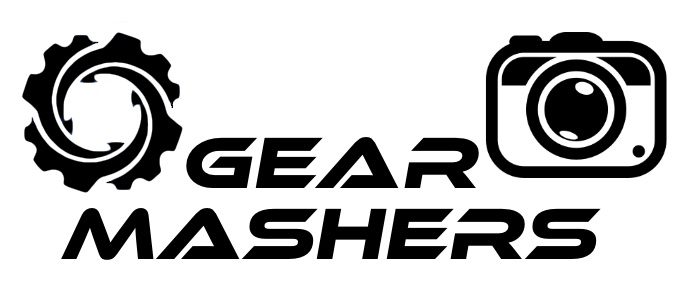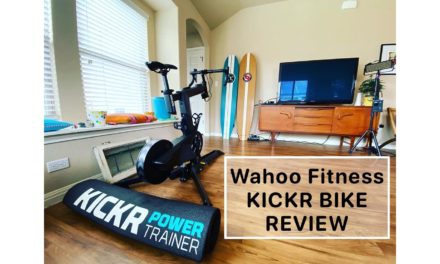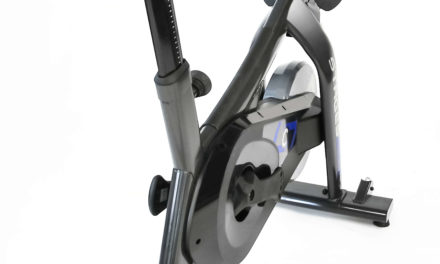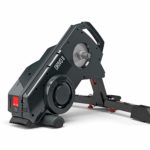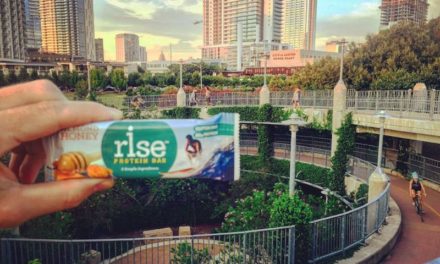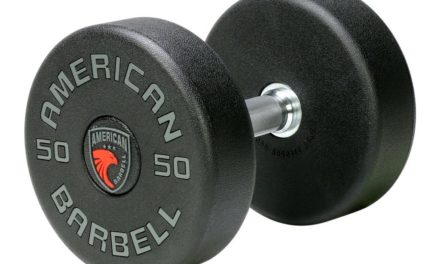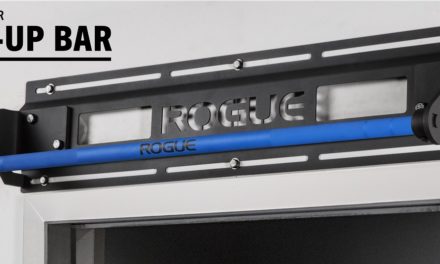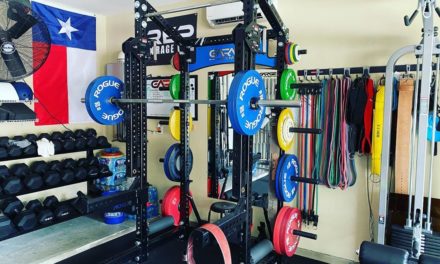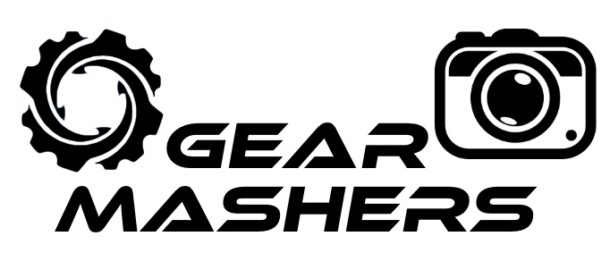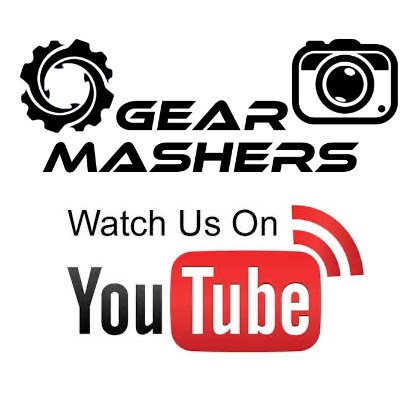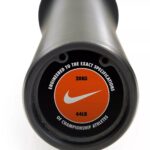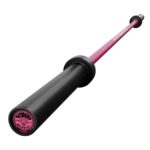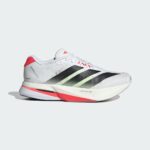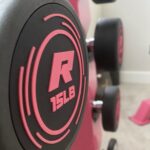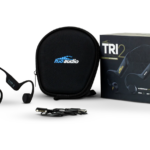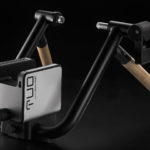
Dumbbell Leg Workouts
Dumbbell Leg Workouts: 5 Exercises to Build Lower-Body Strength Anywhere
When it comes to building strong, powerful legs, you don’t need a squat rack or a fully stocked gym. A pair of dumbbells and smart movement selection can go a long way in developing muscle, boosting endurance, and improving balance. Whether you’re working out at home, at the gym, or on the go, these five dumbbell leg exercises will challenge your lower body in different planes of motion and keep your workouts fresh and effective.
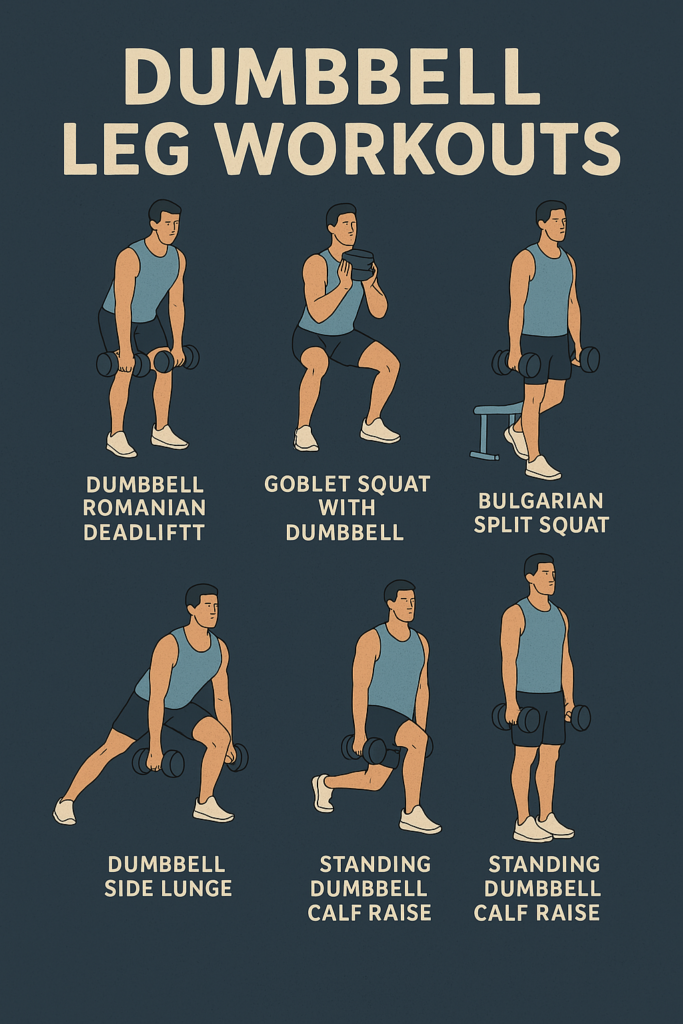
Each movement targets a unique combination of muscle groups and includes coaching cues to help you get the most from every rep.
1. Dumbbell Romanian Deadlift
Primary Muscles Worked: Hamstrings, glutes, lower back
How To Perform the Dumbbell Exercise:
- Stand with feet about hip-width apart and hold a dumbbell in each hand in front of your thighs.
- With a soft bend in your knees, hinge at your hips and push them backward as the dumbbells lower toward mid-shin.
- Keep your spine neutral and core engaged throughout the movement.
- Once you feel a stretch through the hamstrings, drive through your heels to return to standing, squeezing your glutes at the top.
Pro Tips:
- Don’t round your back—imagine holding a straight line from your head to your tailbone.
- Keep the dumbbells close to your legs as they move down and up.
- Focus on pushing your hips backward, not bending forward at the waist.
2. Goblet Squat with Dumbbell
Primary Muscles Worked: Quads, glutes, core
How To Perform the Dumbbell Exercise:
- Hold one dumbbell vertically with both hands, close to your chest.
- Set your feet shoulder-width apart and stand tall.
- Lower into a squat by bending your knees and pushing your hips back as if sitting in a chair.
- Keep your chest lifted and elbows pointing downward.
- Drive through your heels to return to a standing position.
Pro Tips:
- Make sure your knees follow the direction of your toes to avoid inward collapse.
- Avoid lifting your heels—keep your weight distributed evenly across your feet.
- Don’t rush the descent; controlled tempo leads to better muscle engagement.
3. Bulgarian Split Squat
Primary Muscles Worked: Quads, glutes, hamstrings, stabilizers
How To Perform the Dumbbell Exercise:
- Stand about two feet in front of a bench or low platform and hold a dumbbell in each hand by your sides.
- Place the top of one foot behind you on the bench.
- Lower your back knee toward the ground while keeping your front foot flat and chest upright.
- Stop when your front thigh is parallel to the floor.
- Push through your front heel to return to the top and repeat.
Pro Tips:
- Don’t let your front knee push far past your toes—adjust your stance if needed.
- Keep your torso upright and avoid leaning forward excessively.
- Start with bodyweight or lighter dumbbells to build confidence and balance.
4. Dumbbell Side Lunge
Primary Muscles Worked: Inner and outer thighs, glutes, quads
How To Perform the Dumbbell Exercise:
- Stand tall with a dumbbell in each hand, arms down at your sides.
- Step your right foot out wide to the side, bending your right knee and sitting your hips back while your left leg stays straight.
- Keep your chest lifted and core tight as you lower the dumbbells alongside your working leg.
- Push off your right heel to return to the center, then repeat on the left side.
Pro Tips:
- Start with shorter side steps if you’re new to the movement and gradually widen your range.
- Keep both feet flat on the floor for stability.
- Control your pace—don’t rush the movement, especially when returning to center.
5. Standing Dumbbell Calf Raise
Primary Muscles Worked: Calves
How To Perform the Dumbbell Exercise:
- Stand upright with a dumbbell in each hand by your sides, feet about hip-width apart.
- Slowly lift your heels off the ground and rise onto the balls of your feet.
- Pause at the top for a brief squeeze through the calves.
- Lower your heels back to the floor under control and repeat.
Pro Tips:
- Don’t let your ankles roll outward—aim for a straight line from heel to toe.
- Pause at the top of each rep for more time under tension.
- Perform on a small platform or step for an extended range of motion if you want an added challenge.
Common Mistakes to Avoid in Dumbbell Leg Workouts
Using dumbbells to train your lower body can be incredibly effective—if your technique is on point. But even small breakdowns in form can limit your progress or lead to unnecessary strain. To help you stay on track, here are some of the most common mistakes people make during dumbbell leg exercises, and how you can avoid them.
1. Cutting the Range of Motion Short
One of the most overlooked elements of leg training is how deep you go in each rep. It’s tempting to stop short in squats, lunges, or deadlifts—especially when fatigue sets in or the weight starts to feel heavy. But shortening your range of motion leaves strength (and results) on the table.
What to aim for:
- In squats, your hips should ideally lower to knee level or slightly below, depending on your mobility.
- In lunges, your back knee should come close to the ground without slamming into it.
- In deadlifts, the dumbbells should reach mid-shin or just below your knees, not barely past your thighs.
If mobility is a limiting factor, work within a safe depth for now, and focus on improving it over time through consistent practice and stretching.
2. Letting the Knees Collapse Inward or Push Too Far Out
When performing movements like squats or lunges, your knees should track in line with your toes—not collapse inward or flare outward. Letting your knees drift can cause joint stress and affect your balance and power.
How to fix it:
- Actively press your knees outward during squats and lunges (especially on the way up).
- Watch your knee-to-toe alignment in the mirror or record yourself from the front.
- Strengthen your glutes and hips to help maintain proper alignment.
This simple adjustment not only protects your joints—it makes your movements stronger and more efficient.
3. Incorrect Lunge Step Distance
Lunges are a powerhouse movement—but only if your step length is correct. Taking a step that’s too long or too short throws off your form and limits muscle engagement.
What to avoid:
- A step that’s too short causes the front knee to shoot past the toes and reduces glute and hamstring activation.
- A step that’s too long can cause you to lose balance and put strain on your hip flexors or lower back.
Your goal: Keep both knees at roughly 90 degrees when you’re at the bottom of the lunge. The front knee should stack above the ankle, and your back knee should point straight down.
4. Leaning Forward or Backward
During lower-body movements—especially goblet squats and lunges—your posture matters. If you’re leaning too far forward, you shift the load onto your lower back. If you’re leaning backward, you’re likely taking pressure off the working leg.
How to correct it:
- Keep your chest lifted and shoulders stacked over your hips.
- Engage your core throughout each rep to stabilize your spine.
- Use a mirror or video yourself from the side to monitor your torso angle.
Maintaining a strong, upright position helps you activate the right muscles—particularly the glutes and quads—and keeps your spine safe.
5. Rushing Through Reps
Speed might feel like intensity, but rushing through reps often leads to sloppy form and missed muscle engagement. Fast reps can cause you to bounce at the bottom of squats, lose control during lunges, or let momentum replace muscle during deadlifts.
Slow it down by:
- Taking 2–3 seconds to lower into each rep
- Pausing briefly at the bottom position
- Driving up with power, but with control
Time under tension matters just as much as the weight you’re lifting. Slow, controlled reps are the key to building strength and reducing injury risk.
Final Thought
Perfect form won’t just help you avoid injury—it’ll help you get stronger, faster. Take time to focus on proper technique, even if it means using lighter dumbbells at first. Nail the basics, avoid these common mistakes, and your lower-body workouts will be more effective and rewarding in the long run.
Wrap-Up: Dumbbells Are All You Need for Stronger Legs
You don’t need machines or barbells to build a strong, functional lower body. These dumbbell leg exercises can be scaled to fit beginners and advanced lifters alike and are easy to include in full-body workouts, conditioning circuits, or dedicated leg days.
When performed with proper form and intention, they’ll help you develop strength, stability, and mobility that carries over to everyday movement—and more advanced training goals.
Stay consistent, choose weights that challenge you without compromising form, and remember: every rep is a step toward stronger legs.
